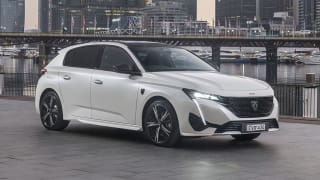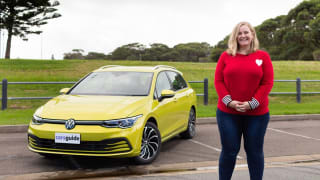There's lots to unpack here.
SEAT started in 1950 as a venture between Fiat, the Spanish government and some private banks, until VW took over in 1986 and turned it into a youth-baiting value brand. Think pre-current Kia positioning.
Meanwhile, Cupra – a portmanteau of Cup Racing – had began as SEAT's competition arm earlier that decade. And there's been a Leon (referencing both ‘lion' and a city in Spain) based on every Golf since the latter's Mk4 iteration, making this generation numero cuatro.
Halve that figure and you end up with the number of small-car PHEVs left in Australia – Cupra's and another big-cat evoking Euro, the Peugeot 308 GT Sport PHEV, costing a few grand more than the VZe from $64,990, before on-road costs.
These high prices are clearly hurdles for Australian small-car buyers. Even Mercedes-Benz recently axed the slow-selling A250e due to a lack of buyer interest. Kia dropped the Niro PHEV. And Hyundai canned the Ioniq PHEV.

So, why are these types of cars so expensive, then?
The Leon and 308 feature a turbo-petrol engine, backed up by a small motor and a battery pack that's large enough to provide a claimed 67km of electric-only range in the Cupra's case. On paper at least.
That's more than the cheaper non-plug-in hybrid alternatives like the wildly-popular Toyota Corolla and superb Honda Civic e:HEV can manage.
So, besides exclusivity and two powertrains, what does the Leon VZe give you for your circa-$65K drive-away ask?
On the safety front, you'll find the now-usual driver-assist items like autonomous emergency braking (AEB), lane-support systems and adaptive cruise control, as well as 10 airbags including a nifty front-centre item. More on this in the safety section below.

Buyers also score LED headlights, auto high beams, fog lights with cornering function, adaptive dampers, tyre-pressure monitors, a reverse camera, electronic instrumentation, three-zone climate control, variable-ratio steering, keyless entry/start, satellite navigation, wireless phone charging as well as wireless Apple CarPlay/Android Auto.
There's also rear privacy glass, four USB-C ports, sports front seats, a heated steering wheel, paddle shifters, ambient lighting, powered/heated exterior mirrors as well as 19-inch alloy wheels and a tyre repair kit. No spare wheel is offered.
The pricier 308 PHEV has most of these plus Matrix LED lighting, Nappa leather upholstery, panoramic opening sunroof, heated/massaging front seats, 360-degree surround-view vision and a digital radio, but has smaller (18-inch) alloys and no adaptive dampers.

Our test car was fitted with the 'Leather Package' that adds $2050 to the price, ushering in leather upholstery, heated front seats with driver's side power and memory, premium audio and dash-top stitching, while the sunroof costs $1800 more.
These take the VZe north of $65,000 drive-away. That's pure-EV territory. Little wonder buyers baulk at PHEV small cars in Australia.























